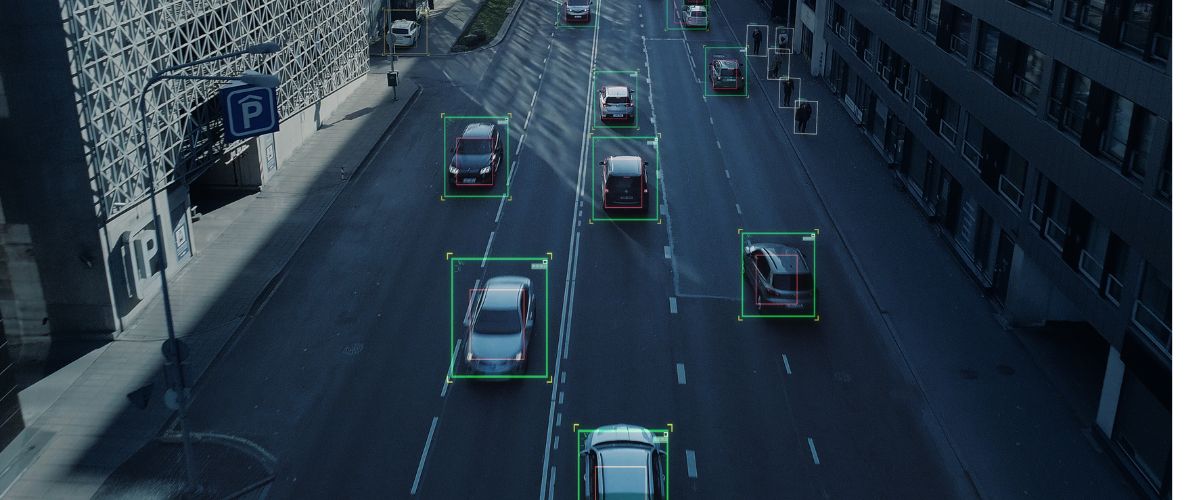This summer you can expect to see self-driving Waymo One cars debuting on the streets of Atlanta. This fully autonomous ride-hailing service, a partnership between Uber and Waymo (a subsidiary of Alphabet), won’t require human drivers to get passengers to many Atlanta destinations.
As yet, Americans are still wary about riding in vehicles with automated driving systems. This may be due to highly publicized accidents involving other brands of autonomous vehicles, such as a 2023 accident in San Francisco when a Cruise ridesharing vehicle struck and dragged a pedestrian twenty feet. (The robotaxi division of Cruise was shut down by its parent company, General Motors, in December 2024.)
Waymo vehicles operate on a Level 4 Autonomy, in which the vehicle is fully responsible for driving without assistance within a set geographical area.
There are already other pilot programs utilizing level 4 autonomy vehicles planned for the metro Atlanta area. For example, Beep has tested its autonomous shuttle service in Cobb County’s Cumberland district, and has two other pilot programs in the works, in Peachtree Corners and on the Atlanta Beltline.
Testing Autonomous Vehicles in the Atlanta Area
It’s important to remember that the purpose of deploying self-driving vehicles in limited areas is to test the software before releasing it generally. In the Cumberland pilot, most of the route travels along dedicated lanes. Also, Beep vehicles running in Cobb County always have an attendant on board to take manual control of the vehicle if necessary.
In comparison, Waymo vehicles will be able to operate within a geofenced 65-square-mile area from Buckhead in the north to the Capitol View neighborhood in south Atlanta. That includes navigating many of the city’s busiest streets without onboard attendants. If a Waymo vehicle encounters an unexpected situation during a ride, it will request guidance from a remote Waymo team member who will direct the vehicle to an alternative route or adjust its operational rules temporarily.
How Safe Are Waymo Vehicles for Riders?
Statistically, Waymos appear to be a relatively safe self-driving option for riders. A recent peer-reviewed study analyzing 25.3 million driverless miles found that Waymo’s autonomous vehicles were involved in 92% fewer bodily injury claims and 88% fewer property damage claims compared to the overall human-driven vehicle population, even when compared to newer, tech-enabled vehicles. These findings suggest that Waymo’s fully autonomous vehicles may outperform human drivers in real-world safety outcomes.
As autonomous vehicle technology continues to evolve, safety concerns and system glitches remain key considerations – particularly as courts assess how liability applies in cases involving rider injury or vehicle error, such as:
- In May 2024, a passengerless Waymo hit a utility pole in Phoenix, AZ.
- Also in Phoenix, in December of 2024 a passenger recorded being stuck in a Waymo vehicle driving in circles.
- In April 2025, passengers claimed their Waymo stopped in a busy expressway merge lane in Austin and would not allow them to exit from the vehicle. However, according to a Waymo spokesperson, Chris Bonelli, “During their ride, the passengers in the video pressed the ‘pull over’ button and the vehicle pulled to the side of a 30 mph road with a sidewalk. The riders could have safely exited at any time and at no point did our Rider Support team remotely unlock the door for them.”
How Will Atlanta Be Different?
There’s also an issue of how Waymo vehicles will perform in the Atlanta area, which ranks as one of the top 10 US cities for traffic congestion. The vehicles have already been introduced in San Francisco, Los Angeles, Phoenix, and Austin. However, unlike most of the metro regions in which Waymo already operates, Atlanta is subject to heavy rainfall, flooding, and even snow or icy conditions during winter months. Waymo engineers, however, maintain that they have invested a significant amount in technology that will enable vehicles to assess weather conditions.
Atlanta’s combination of dense traffic, frequent road work, and high pedestrian activity presents unique challenges for autonomous vehicle testing and operations. According to GDOT there were approximately 33,000 vehicle accidents in the city of Atlanta in 2024. But if self-driving vehicles perform as promised, they may prove an overall benefit to the city as less accidents may occur from these vehicles.
In the future, self-driving vehicles are expected to include vehicle-to-vehicle (V2V) and vehicle-to-infrastructure (V2I) communications systems that may help mitigate traffic incidents and improve traffic flow. And while research has shown that autonomous vehicles’ visual systems can misinterpret traffic signs that have been manipulated or obscured, ongoing software updates aim to address these challenges, enhancing the vehicles’ ability to accurately interpret traffic signs even under less-than-ideal conditions.
What To Do If Your Waymo Ride Is Involved in an Accident
If the Waymo you are riding in is involved in an accident, follow these steps:
Stay Inside and Call for Help
Unless it is clearly unsafe, stay inside the vehicle. Some autonomous vehicles, including Waymo, are designed to continue driving until they can safely pull over. Follow any on-screen instructions or use the Help button on the touchscreen or Uber app to contact Waymo support. Waymo may dispatch Roadside Assistance to your location to get you to your destination.
Call 911 for Police and EMT Support
If you feel you or another passenger may have sustained injuries, or if the vehicle is positioned where it may cause another accident, call 911. Emergency responders can provide medical assistance and secure the scene. A responding officer will also file a police report, a key piece of documentation for insurance claims and any potential legal action.
If you’re able, note down the report number and the officer’s name and contact information. If you are a Montlick Injury Attorney client, our team handles the process of obtaining the police report, the crash report, and other critical documentation, so you can focus on recovery while we begin building your case.
If you’re not a Montlick client, you can request the official crash report through the Georgia Department of Transportation’s online portal at buycrash.com. You can request the police report directly from the responding law enforcement agency – typically the local police department, county sheriff’s office, or Georgia State Patrol, depending on who was at the scene.
Document the Accident
Take notes about what happened and, if it’s safe to do so, photos of the vehicles. If possible, exchange information with any other drivers, passengers, or bystanders who witnessed the accident. Document any possible issues that might have caused the vehicle accident, for example:
- The date, time, and exact location of the accident.
- Weather and road conditions at the time (for example, clear, raining, snowing, dry, wet, icy).
- Visibility conditions (e.g., daylight, dusk, night, fog).
- A step-by-step account of what happened, including each vehicle that was involved, the direction they were travelling, and any other circumstances (double-parked cars, pedestrians, vehicles that left the accident scene, etc.).
- Any actions the self-driving system took or failed to take.
- The behavior of other involved vehicles or pedestrians.
Waymo vehicles are equipped with cameras which should have documented the accident. Your personal injury attorney can request or subpoena this footage from the company. There should also be a recording captured of any interaction you had with Uber support.
Document Your Injuries
The good news is that currently, Waymo provides some medical coverage for injured riders, regardless of who’s at fault or whether you have additional coverage. That can include your medical expenses, insurance deductibles, co-pays, and prescriptions beyond what your other insurance plans have paid, for a period of one year from the date of the injury. There is additional coverage for accidental death and dismemberment. (So far there have been no reports of any such injuries.)
But even a “minor” accident can leave a victim with lasting injuries. Follow up with a medical professional as soon as possible to check for any possible injuries.
Determining Responsibility for Waymo Accidents is Complicated
Regardless of whether your Waymo vehicle or another driver is at fault, it’s important to contact an experienced personal injury attorney after any accident involving a Waymo vehicle. These cases can involve complex questions of liability, insurance coverage, and technical evidence such as:
- Multiple layers of insurance: Waymo, Uber, other drivers, and third parties
- Complex questions of fault: including determining partial liability and involving multiple automated systems
- Technological issues: software-related, sensor issues, weather- and hardware-related issues
- Large corporate defendants: both Waymo and Uber as well as third party partners
Other potentially liable parties could include:
- Other drivers involved in the collision
- The municipality or state where the accident occurred, if unsafe road conditions, missing signage, or malfunctioning traffic signals contributed to the collision
- The vehicle owner (in this case, Uber) if poor vehicle maintenance played a role
- A pedestrian or cyclist
Because of these overlapping liability questions, it’s critical to work with attorneys experienced in complex auto accident cases and technical liability cases who can protect your rights and build a strong claim.
Contact a Lawyer As Soon As Possible
Montlick has over 40 years of experience handling complex claims and fighting for the compensation our clients deserve. If you or a loved one has been injured while riding in a Waymo vehicle, call us nationwide 24 hours day/7 days a week for your free consultation at 1-800-LAW-NEED® or 1-866-545-1592, or simply dial #WIN® (#946) from your mobile phone. You can also fill out our Free Case Evaluation Form online or use our Free 24-hour live chat.


